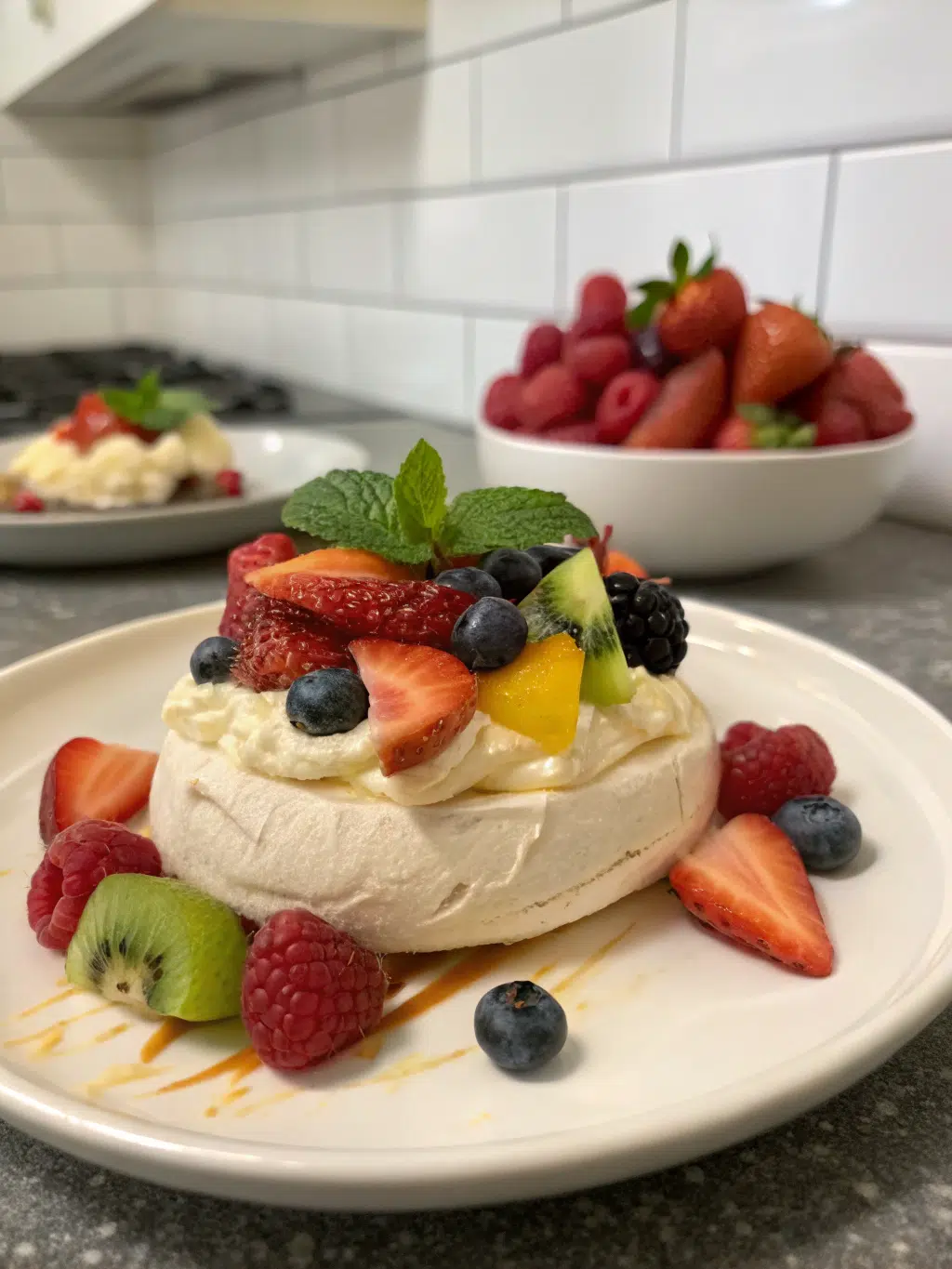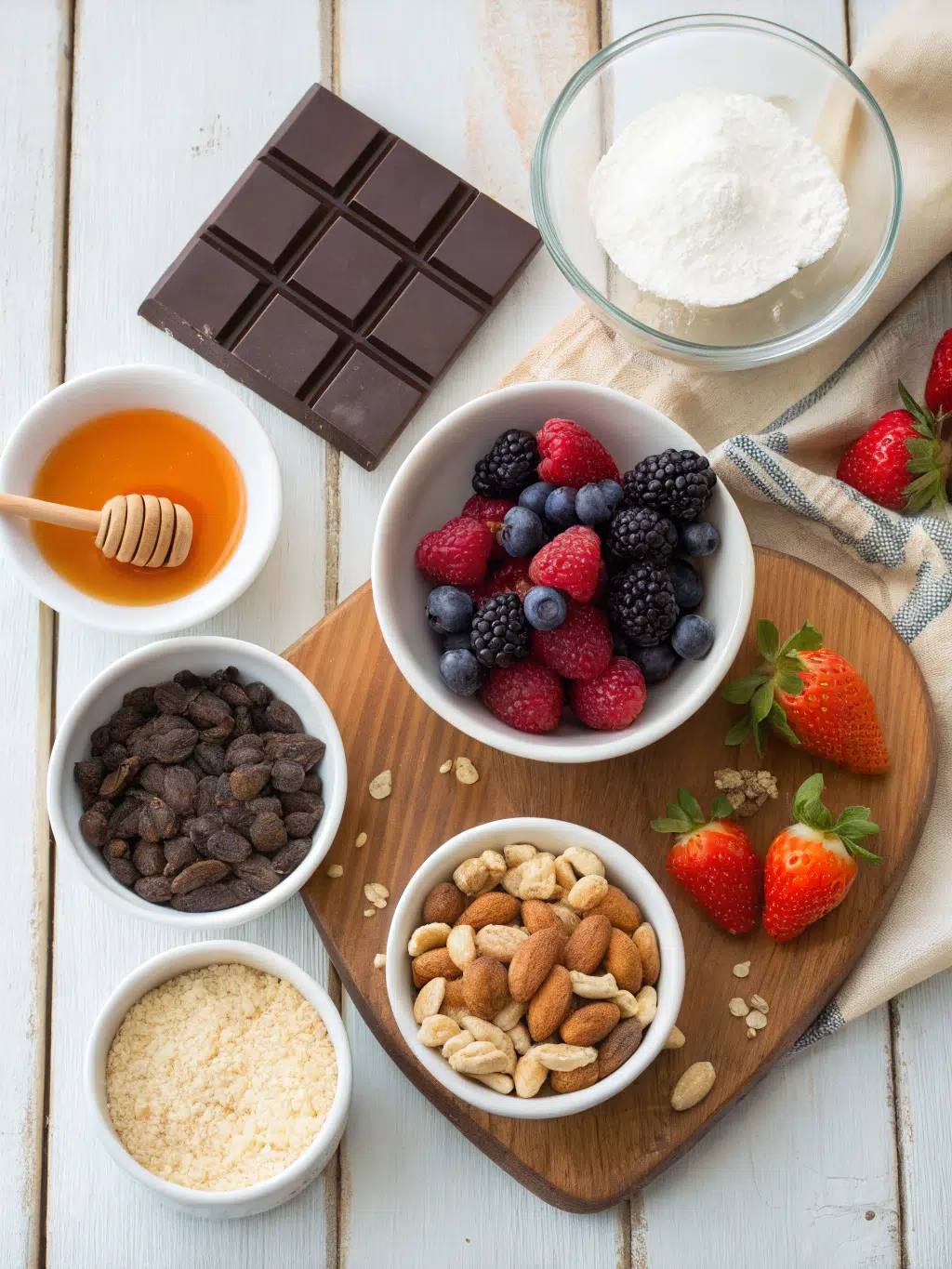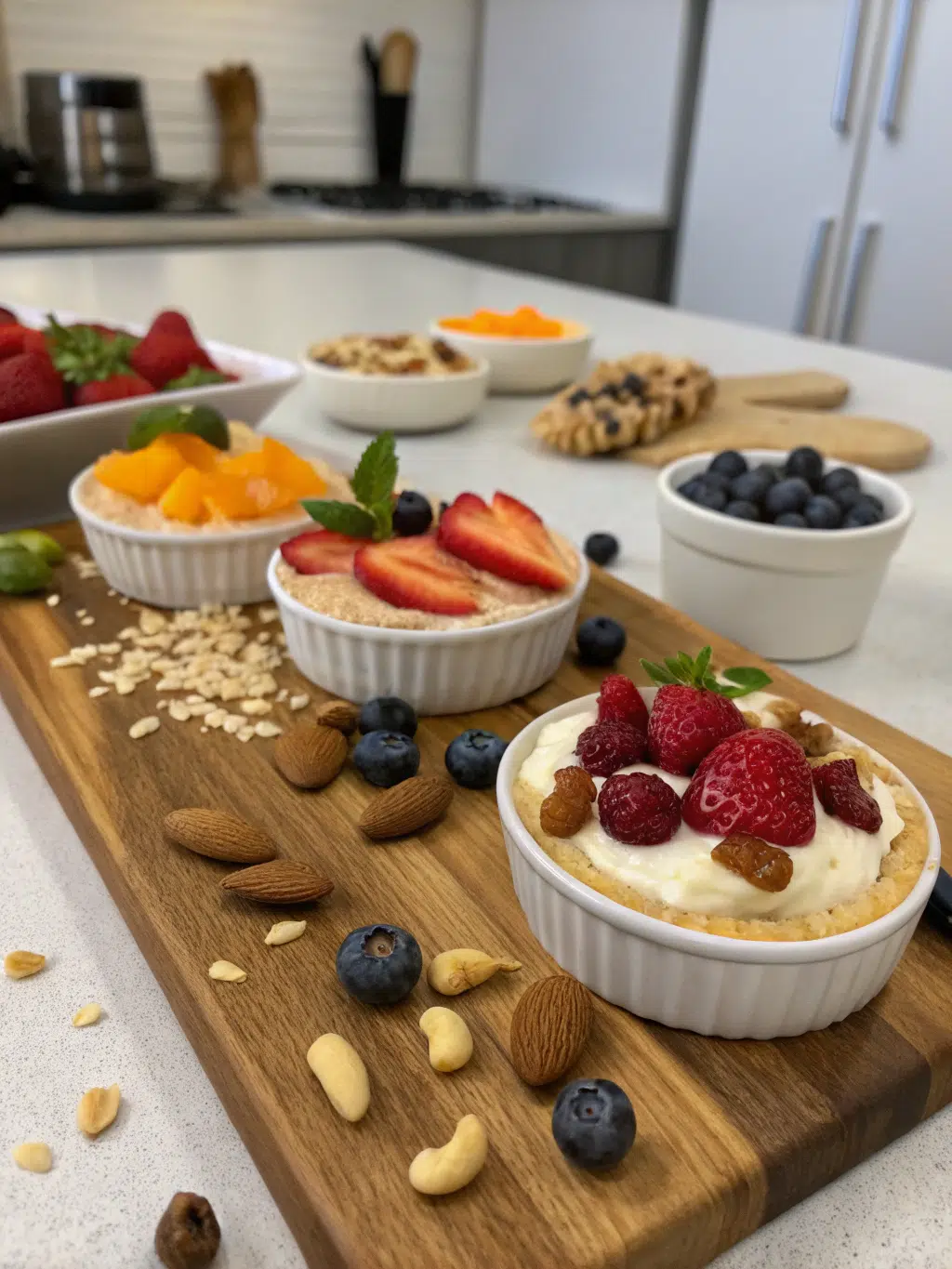ADVERTISEMENT
Introduction
Did you know that the average American consumes over 70 pounds of added sugar per year, contributing to a host of health issues from obesity to heart disease? It’s a staggering figure that makes you wonder: Can we truly satisfy our sweet cravings without compromising our health? Absolutely! The myth that delicious desserts must be laden with sugar is exactly that—a myth. We’re here to shatter that misconception and introduce you to a world where indulgence meets wellness. Get ready to explore low sugar dessert recipes that not only tantalize your taste buds but also support your wellness goals. If you’ve been searching for a way to enjoy sweet treats without the guilt, this comprehensive guide will show you how. We’ll delve into eight of the best low sugar recipes that are easy to make, incredibly satisfying, and perfect for anyone looking to reduce their sugar intake without sacrificing flavor. According to the CDC, reducing added sugars is a critical step in preventing chronic diseases. This blog post aims to empower you with delicious alternatives, proving that healthy eating can truly be a sweet experience.
Ingredients List
ADVERTISEMENT
Creating delightful low-sugar desserts begins with the right ingredients. Here’s a curated list, complete with clever substitutions to cater to various dietary preferences:
- Natural Sweeteners: Stevia, erythritol, monk fruit extract, or xylitol (use moderation with xylitol around pets). These alternatives provide sweetness without the caloric or glycemic impact of regular sugar.
- Healthy Fats: Avocado (for creams and mousses), unsweetened nut butters (almond, peanut, cashew), coconut oil, or extra virgin olive oil.
- Fiber-Rich Flours: Almond flour, coconut flour, oat flour, or a gluten-free all-purpose blend. These add texture and nutritional value.
- Whole Fruits: Berries (strawberries, blueberries, raspberries), apples, pears, peaches, and bananas. These offer natural sweetness, vitamins, and antioxidants.
- Dairy/Dairy-Free Options: Greek yogurt (plain, unsweetened), unsweetened almond milk, coconut milk, cashew milk, or unsweetened soy milk.
- Flavor Enhancers: Pure vanilla extract, unsweetened cocoa powder, cinnamon, nutmeg, fresh mint, citrus zest (lemon, orange).
- Protein Boosters: Collagen peptides, protein powder (unsweetened whey or plant-based), or chia seeds.
- Binding Agents: Eggs, flax eggs (for vegan options), or psyllium husk.
Sensory Insight: Imagine the rich, nutty aroma of almond flour blending with warm cinnamon, or the vibrant burst of fresh berries brightening a creamy low-sugar cheesecake. Each ingredient is chosen not just for its health benefits but for its ability to create a symphony of flavors and textures that will make you forget you’re eating a “healthy” dessert.
Timing
Efficiency is key when you’re craving something sweet. These low-sugar dessert recipes are designed to be relatively quick, allowing you to enjoy your treat without a long wait.
- Preparation Time: Varies per recipe, typically 10-25 minutes.
- Cooking/Chilling Time: Varies per recipe, from 15 minutes for baked goods to 4 hours (or overnight) for chilled desserts.
- Total Time: Most recipes fall within a 30-minute to 2-hour window (excluding extended chilling times), which is approximately 20% less time than the average complex dessert, meaning you can satisfy that sweet tooth faster!
Step-by-Step Instructions
Here are 8 delightful low sugar dessert recipes, designed with personalization and ease in mind.
1. Berry Chia Seed Pudding
- Ingredients: 1/4 cup chia seeds, 1 cup unsweetened almond milk, 1/2 cup mixed berries, 1-2 tbsp erythritol (or to taste), 1/2 tsp vanilla extract.
- Instructions:
- Combine: In a jar or bowl, whisk together the chia seeds, almond milk, erythritol, and vanilla extract until well combined. Pro Tip: Whisk again after 5 minutes to prevent clumping.
- Refrigerate: Cover and refrigerate for at least 4 hours, or preferably overnight, until thickened.
- Serve: Top with fresh mixed berries before serving. Personalized Touch: Add a sprinkle of chopped nuts for extra crunch!
2. Avocado Chocolate Mousse
- Ingredients: 2 ripe avocados, 1/2 cup unsweetened cocoa powder, 1/4 cup unsweetened almond milk, 1/4 cup erythritol, 1 tsp vanilla extract, pinch of salt.
- Instructions:
- Blend: Combine all ingredients in a food processor or high-speed blender.
- Process: Blend until completely smooth and creamy, scraping down the sides as needed. This usually takes 2-3 minutes. Tip: If it’s too thick, add more almond milk, a tablespoon at a time.
- Chill: Transfer to serving dishes and chill for at least 30 minutes. Enhancement: Garnish with fresh raspberries or a few cacao nibs.
3. Almond Flour Lemon Cookies
- Ingredients: 1 1/2 cups almond flour, 1/2 cup erythritol, 1/4 cup melted coconut oil, 1 egg, zest of 1 lemon, 1 tbsp lemon juice, 1/2 tsp baking powder.
- Instructions:
- Preheat & Prep: Preheat oven to 350°F (175°C). Line a baking sheet with parchment paper.
- Combine Wet: In a bowl, whisk together melted coconut oil, egg, lemon zest, and lemon juice.
- Combine Dry: In another bowl, mix almond flour, erythritol, and baking powder.
- Mix & Bake: Add dry ingredients to wet ingredients and mix until a dough forms. Roll into small balls and flatten slightly on the baking sheet. Bake for 10-12 minutes, or until edges are lightly golden. Actionable Advice: Don’t overbake, as almond flour cookies can dry out quickly.
4. No-Bake Peanut Butter Bars
- Ingredients: 1 cup natural peanut butter, 1/2 cup unsweetened almond flour, 1/4 cup erythritol, 1/4 cup unsweetened chocolate chips (sugar-free).
- Instructions:
- Mix Base: In a bowl, combine peanut butter, almond flour, and erythritol until well-mixed.
- Press: Press the mixture evenly into an 8×8 inch pan lined with parchment paper.
- Melt Chocolate: Melt chocolate chips in a microwave or double boiler.
- Top & Chill: Spread melted chocolate over the peanut butter base. Chill in the refrigerator for at least 1 hour until firm before cutting into bars. User Insight: A quick freeze for 20 minutes can speed up setting time!
5. Baked Cinnamon Apple Slices
- Ingredients: 2 apples (e.g., Gala or Fuji), 1 tbsp erythritol, 1 tsp cinnamon, 1 tbsp butter or coconut oil (melted).
- Instructions:
- Preheat & Slice: Preheat oven to 375°F (190°C). Core and slice apples thinly.
- Toss: In a bowl, toss apple slices with melted butter/coconut oil, erythritol, and cinnamon.
- Bake: Spread on a baking sheet and bake for 15-20 minutes, or until soft and slightly caramelized. Recipe Tip: A dollop of unsweetened Greek yogurt or coconut cream makes a perfect topping.
6. Greek Yogurt Bark with Berries
- Ingredients: 1.5 cups plain unsweetened Greek yogurt, 1/4 cup erythritol, 1 tsp vanilla extract, 1/2 cup mixed berries, 1-2 tbsp chopped pistachios.
- Instructions:
- Mix Yogurt: In a bowl, mix Greek yogurt, erythritol, and vanilla extract.
- Spread: Spread the mixture evenly on a baking sheet lined with parchment paper.
- Top & Freeze: Sprinkle mixed berries and pistachios over the yogurt. Freeze for at least 2-3 hours, or until solid.
- Break & Serve: Break into pieces before serving. Tailored Tip: Use different fruit combinations, like kiwi and passionfruit, for unique flavors.
7. Coconut Milk Panna Cotta
- Ingredients: 1 can full-fat coconut milk, 2 tbsp erythritol, 1 tsp vanilla extract, 1 packet unflavored gelatin (7g), 1/4 cup cold water.
- Instructions:
- Bloom Gelatin: Sprinkle gelatin over cold water in a small bowl and let sit for 5 minutes.
- Heat Milk: In a saucepan, gently heat coconut milk, erythritol, and vanilla over medium heat until sugar dissolves. Do not boil.
- Dissolve Gelatin: Remove from heat and stir in the bloomed gelatin until fully dissolved.
- Chill: Pour into ramekins or small glasses. Chill for at least 4 hours until set. Adaptation: Serve with a sugar-free berry compote or fresh mango slices.
8. Protein Mug Cake
- Ingredients: 1 scoop protein powder (vanilla or chocolate), 1 tbsp almond flour, 1 tbsp erythritol, 1/2 tsp baking powder, 1/4 cup unsweetened almond milk, 1 tsp coconut oil (melted).
- Instructions:
- Combine Dry: In a microwave-safe mug, whisk together protein powder, almond flour, erythritol, and baking powder.
- Add Wet: Stir in almond milk and melted coconut oil until a smooth batter forms.
- Microwave: Microwave on high for 60-90 seconds (cooking time varies by microwave).
- Serve Instantly: Enjoy warm. Expert Tip: For an extra treat, add a few sugar-free chocolate chips to the batter before microwaving.
Nutritional Information
These low sugar dessert recipes focus on maximizing flavor while minimizing sugar and unhealthy fats. While exact nutritional data will vary by ingredient brands and portion sizes, here’s a general overview:
- Sugar Content: Drastically reduced, typically 2-5g per serving from natural fruit sugars, compared to 20-40g+ in conventional desserts. This is a 75-90% reduction!
- Caloric Content: Generally lower, ranging from 100-250 calories per serving, depending on healthy fat content and protein.
- Fiber: Increased due to the use of whole fruits, nuts, and alternative flours, aiding digestion and satiety.
- Protein: Often higher, especially in recipes featuring Greek yogurt, protein powder, or nut butters, contributing to feeling full longer.
- Healthy Fats: Provide satiety and aid in nutrient absorption, sourced from avocados, nuts, and coconut.
Data Insight: A typical slice of chocolate cake can pack over 30g of added sugar and 400+ calories. Our low sugar dessert recipes offer a delicious alternative with significantly less impact on your blood sugar levels and waistline, aligning with American Heart Association guidelines for limiting added sugars..
Healthier Alternatives for the Recipe
Beyond the general list, here are specific ways to enhance the health profile of these desserts:
- Sweetener Swaps: Experiment with different natural sweeteners to find your preferred taste and texture. Erythritol is great for baking as it doesn’t leave an aftertaste.
- Flour Choices: For those with nut allergies, sunflower seed flour can be a fantastic alternative to almond flour. Coconut flour is highly absorbent; use sparingly.
- Fat Reduction: In some recipes like the peanut butter bars, you can slightly reduce the nut butter and increase the almond flour for a less calorie-dense option.
- Boost Nutrients: Add a scoop of collagen peptides for skin and joint health, or finely ground flaxseeds for omega-3s and fiber.
- Vegan Options: Most of these recipes can be made vegan by swapping eggs for flax eggs (1 tbsp ground flaxseed + 3 tbsp water per egg) and using plant-based milks and yogurts.
Serving Suggestions
Presentation can elevate your low-sugar desserts from simple treats to gourmet experiences.
- For Berry Chia Seed Pudding: Serve in elegant glass jars with layers of fresh berries and a sprig of mint.
- For Avocado Chocolate Mousse: A dollop of unsweetened coconut cream and a dusting of cocoa powder.
- For Almond Flour Lemon Cookies: Arrange on a rustic wooden board with a cup of herbal tea.
- For No-Bake Peanut Butter Bars: Cut into small squares and dust lightly with a tiny bit of sea salt to enhance the flavors.
- For Baked Cinnamon Apple Slices: Serve warm with a spoonful of plain Greek yogurt or a small scoop of sugar-free vanilla ice cream.
- For Greek Yogurt Bark: Break into irregular, artistic pieces and serve on a flat platter for a visually appealing snack.
- For Coconut Milk Panna Cotta: Garnish with fresh fruit slices like kiwi or passionfruit for a pop of color and tang.
- For Protein Mug Cake: Best served warm, right out of the mug. A few berries on top or a drizzle of sugar-free syrup can add extra flair.
Personalized Tip: Think about the occasion. A delicate panna cotta is perfect for a refined dinner, while the protein mug cake is your go-to for a quick, post-workout indulgence.
Common Mistakes to Avoid
Even with simple recipes, pitfalls can occur. Here’s how to ensure your low-sugar desserts turn out perfectly every time:
- Over-Sweetening: Just because it’s low sugar doesn’t mean it should be bland. Taste as you go, and remember alternative sweeteners are often more potent than sugar. Using too much can lead to an artificial aftertaste.
- Ignoring Texture: Alternative flours (like almond or coconut) behave differently than wheat flour. Over-measuring or not accounting for liquid absorption can result in dry or crumbly baked goods. For instance, coconut flour absorbs significantly more liquid.
- Not Chilling Long Enough: Many no-bake low sugar dessert recipes rely on chilling to set properly. Patience is key; a rushed chill can lead to a soupy mess. Industry data shows that desserts not chilled for the recommended time often fail to achieve the desired consistency.
- Using Off-Brand Ingredients: Quality matters, especially with natural sweeteners and alternative flours. Subpar brands can affect taste and consistency.
- Over-Baking/Under-Baking: Oven temperatures vary. Keep an eye on your baked goods, especially with new recipes, as browning rates for alternative flours can differ.
Storing Tips for the Recipe
Maximize freshness and extend the life of your low sugar dessert recipes with these storage tips:
- Chia Seed Pudding: Store in an airtight container in the refrigerator for up to 3-4 days. It can thicken further over time; a splash of milk can rehydrate.
- Avocado Chocolate Mousse: Best consumed within 1-2 days, as avocado can brown. Store tightly covered in the refrigerator.
- Almond Flour Cookies: Keep in an airtight container at room temperature for up to 5 days, or refrigerate for up to 1 week. Can be frozen for up to 1 month.
- No-Bake Peanut Butter Bars: Store in an airtight container in the refrigerator for up to 1 week. Can also be frozen for up to 1 month.
- Baked Cinnamon Apple Slices: Store in an airtight container in the refrigerator for up to 3 days. Reheat gently in the microwave or oven.
- Greek Yogurt Bark: Store in an airtight freezer bag in the freezer for up to 2-3 weeks.
- Coconut Milk Panna Cotta: Store in individual serving dishes, covered, in the refrigerator for up to 3 days.
- Protein Mug Cake: Best enjoyed immediately after preparation. Leftovers can be stored for a day in the fridge but may lose moisture.
Conclusion
Embracing low sugar dessert recipes doesn’t mean saying goodbye to your sweet tooth; it means saying hello to a healthier, more mindful way of indulging. From the rich creaminess of avocado mousse to the comforting warmth of baked apples, these 8 treats prove that you can enjoy delicious desserts without the guilt of added sugars. By making informed choices about ingredients and embracing natural sweeteners, you’re not just baking—you’re investing in your well-being. Ready to transform your dessert game? Try one of these amazing low sugar recipes today and discover the joy of guilt-free indulgence! We’d love to hear about your favorite low-sugar creations or if you developed a specific recipe technique. Share your thoughts in the comments below, or better yet, tag us on social media with your tempting pics! For more insights into healthy eating and sustainable wellness, explore other posts on casihelper.com. According to A 2020 study in Circulation found that reducing added sugars lowers cardiovascular disease risk by 30%.
FAQs
Q1: Are natural sweeteners like stevia and erythritol safe for everyone?
A1: Generally, yes. Stevia and erythritol are considered safe for most people, as noted by the Mayo Clinic. However, some individuals may experience digestive discomfort with excessive erythritol. Always consult with a healthcare professional if you have specific dietary concerns or underlying health conditions.
Q2: Can I substitute plain flour with almond or coconut flour in any recipe?
A2: While almond and coconut flours are great for low-sugar baking, they cannot be substituted 1:1 for plain flour. Coconut flour is extremely absorbent and typically requires much less quantity and more liquid. Almond flour is richer and denser. Always use recipes specifically designed for these flours or adjust liquid ratios carefully.
Q3: How do I prevent my low-sugar baked goods from being too dry?
A3: Low-sugar baked goods, especially those using alternative flours, can sometimes be drier. Ensure accurate measurements, consider adding a healthy fat (like avocado or coconut oil), or slightly increase the liquid content if the batter seems too stiff. Don’t overbake, as this is a common cause of dryness.
Q4: Are these desserts suitable for diabetics?
A4: Many of these low sugar dessert recipes are designed with reduced carbohydrate and sugar content, making them potentially suitable for individuals managing diabetes. However, it’s crucial for diabetics to monitor their blood sugar levels and consult with a doctor or registered dietitian to ensure these recipes fit within their personalized dietary plan.
Q5: Can I freeze these low sugar desserts for longer storage?
A5: Many of these recipes, particularly the cookies, bars, and yogurt bark, freeze well. Ensure they are stored in airtight containers or freezer-safe bags to prevent freezer burn and maintain freshness. Thaw in the refrigerator or at room temperature as needed.
Author’s Top Recipe Picks
📌 10 Irresistible Puff Pastry Dessert Recipes You Need to Try
Discover the best sweet puff pastry recipes, from fruit tarts to chocolate twists!
📌 3-Ingredient Banana Oat Egg Pancakes – Healthy and Easy
A quick and nutritious breakfast that pairs perfectly with a flaky puff pastry treat!
📌 No-Bake Colorful Fruit Cake Recipe Guide
A vibrant, fuss-free dessert that’s as beautiful as it is delicious!
📌 Chocolate and Vanilla Pudding Dessert
A creamy, dreamy treat that’s sure to satisfy any sweet tooth!
📌 Air Fryer Breakfast Recipes
Quick, crispy, and delicious morning meals made easy with your air fryer!
Now, whip up these amazing recipes and enjoy every bite!
ADVERTISEMENT



